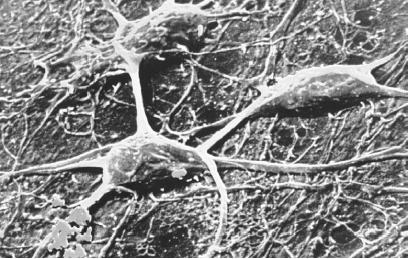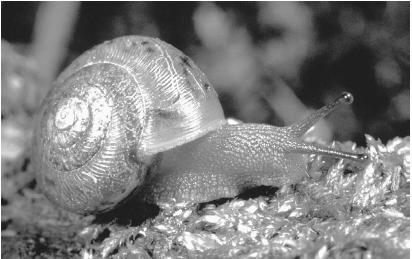Chemoreception - How it works

The Senses
The term sense, which also may be called sensory reception and sensory perception, refers to the means by which an organism (usually an animal) receives signals regarding physical or chemical changes or both in its environment. Sensory reception and perception entail the translation of these signals, which represent changes in the matter or energy of the environment, into processes within the body and brain. For example, if you eat a cookie, your sense of taste translates the chemical data from that cookie into the sensation of sweetness, a sensation your brain most likely perceives as a pleasing one.
In everyday language, people are accustomed to speaking of five senses possessed by humans and, to a greater or lesser degree, by other animals: sight, touch, smell, hearing, and taste. The reality is rather more complex. For one thing, there are not really just five senses; rather, there are at least five others—and there may be more, depending on just how one defines and classifies the senses. These other senses include the kinesthetic sense, or the discernment of motion; the sensation of temperature, or distinguishing relative heat and cold; the awareness of pressure; the sense of equilibrium or balance; and the perception of pain.
All of these senses involve a response to stimuli, which may be defined as any phenomenon (that is, an observable fact or event, such as an environmental change) that directly influences the activity or growth of a living organism. Each of these senses has a biological component as well as a physical or a chemical one. In the next few paragraphs, we briefly discuss what this means, first by considering the nervous system in general terms and then by looking at the physical and chemical receptors that transmit data through that system.
THE NERVOUS SYSTEM.
All sensation is biological in the sense that an organism not only must be living to experience it but also must have a functioning nervous system. The latter is a network, found in the bodies of all vertebrates

To be experienced through the senses, all data must be transmitted to the brain through the nervous system. This happens through the conversion and transmission of physical or chemical information, which takes place in sensory nerves known as receptors. A receptor is a structure in the nervous system that receives specific stimuli and is affected in such a way that it sends particular messages to the brain. The brain interprets these messages as sensations corresponding to the stimuli. Primary receptors are those that directly convert stimuli to electronic signals, which they send to the brain. Neurons, or nerve cells, serve as primary receptors. In addition, there are secondary receptors, which simply transmit signals between neurons. Secondary receptors induce a response in an adjoining neuron, thus sending the signal down the line toward the brain.
PHYSICAL AND CHEMICAL RECEPTORS.
As we have noted, the changes in the outside environment that the brain interprets as sensation are either physical or chemical in origin. By physical, we mean the types of data and phenomena that are studied in the science of physics: matter, energy, and the interactions between them. Likewise, chemical, refers to objects of study in the scientific realm of chemistry: elements, compounds, and mixtures.
In the human body there are sensory nerves devoted to the interpretation of physical or chemical data. Among the receptors of physical data are photoreceptors, which respond to light and therefore play a part in the sense of sight; thermoreceptors, which respond to temperature and are concerned with the sense of heat and cold; and nociceptors, or pain receptors. In addition, there are mechanoreceptors, which respond to the mechanical properties of matter and are involved in the senses of touch, hearing, and equilibrium.
As for chemical data, they are interpreted through chemoreceptors, which govern the senses of smell and touch. For this reason, chemoreceptors sometimes are referred to as the chemical senses. Our focus in the present context, of course, is on chemoreception, the term for the physical process whereby organisms—not just humans, but virtually all animals—respond to chemical stimuli.
Distinguishing Gustation and Olfaction
We tend to associate taste and smell, and indeed there is some relation between them, but there are also numerous distinctions. Not everyone with an acute sense of smell, for instance, has as finely honed a sense of taste. Conversely, people with poor senses of smell do not necessarily suffer a corresponding impairment in their taste buds. The neurological structures that have to do with taste and smell, at least in higher animals, are not the same. Whereas gustatory sensation travels via secondary receptors called epithelial cells, which pass messages to adjacent neurons, olfactory signals enter the nervous system through primary receptors.
The principal sensory organs of gustation and olfaction in a human being are, respectively, the taste buds on the tongue and the olfactory receptors located within the olfactory epithelium in the nasal cavity. They are designed to respond to two entirely different types of chemical materials. Taste buds are best at receiving sensory data from water-soluble chemicals, or those that dissolve in water, while the olfactory receptors are most attuned to vapors that are water-insoluble.
WATER AND OIL.
Almost everyone who has ever eaten a hot, spicy dish has tried to "put out the fire" in their mouths by drinking water, only to discover to their dismay that water only seemed to make the problem worse. On the other hand, milk is usually quite effective. The reason is that most spicy-hot substances tend to be oily, and therefore they do not readily form intermolecular bonds with water. On the other hand, milk, though it is largely composed of water, also contains oily fat particles. Thanks to the chemistry of water-and oil-based substances, it is true (as the old saying goes) that "oil and water don't mix."
In water, hydrogen and oxygen have significantly different levels of electronegativity, or the relative ability of an atom to attract valence electrons, which are used in chemical bonding. Therefore, a water molecule tends to be electrically bipolar, with all the negative charges on the end or side where the oxygen atom is located and all the positive charges on the end or side of the hydrogen molecules. In petroleum and most other oily substances, however, the molecules typically include some combination of carbon and hydrogen, which have similar electronegativity values. For that reason, the electric charges are distributed more or less evenly throughout the molecule. As a result, oily substances form very loose intermolecular bonds, and they tend not to bond with water-based substances.
As for taste buds and olfactory membranes, it is fitting that the taste buds would be more receptive to water-based foods and liquids, since most foods (including jalapeño peppers) contain at least some water. Obviously, if we can taste spicy-hot substances, then there must be some receptivity to oil-based foods. Part of this receptivity involves the olfactory membranes, which, as we have noted, are more receptive to oily materials.
Animals and Chemoreception
Just as taste and smell are sharply distinguished in humans (despite the fact that smell aids us in the process of tasting), the same is true of most vertebrates. In the case of invertebrates, such as worms, however, there is much less differentiation between gustatory and olfactory receptors. These animals, in fact, may have only one chemical sense, with only slight differences between what scientists call distance chemoreception, more or less the same as smell in vertebrates, and contact chemoreception, which corresponds to vertebrates' sense of taste.
Such analogies can be made because distance chemoreceptors appear to respond to non-water-soluble substances in the same way that the olfactory receptors in vertebrates do, while contact chemoreceptors are more responsive to water-soluble chemicals. As with many other animals, these senses are linked to numerous behaviors—not just feeding—in invertebrates. Distance chemoreception enables invertebrates to sense the presence of chemicals that pose a danger, signaling the need to move away, while contact chemoreception assists the invertebrate in determining when to mate and when to lay eggs.
THE MANY FUNCTIONS OF CHEMORECEPTION.
Terrestrial, or land-based, animals whose skins secrete mucus

This is yet another example of the fact that, while chemoreception in animals is associated most readily with tasting and smelling, it is linked to myriad other functions as well. Some insects may use chemoreception to detect the presence of moisture, and many animals apply it for a variety of purposes. Such purposes include selection and courtship of a mate as well as the identification of friends or foes. A dogs' sense of smell tells it everything it needs to know about a new animal or person it encounters; similarly, a cat may identify another cat by sniffing its rectum. Smell also can be used to mark territory, which is why dogs and cats mark their "turf" by urinating. Both chemical senses, particularly smell, are important mediums of communication in the animal kingdom.
Mechanisms of Taste and Smell
Scientists in the nineteenth century believed that human tongues have receptors for four basic tastes: sweet, sour, salty, and bitter. More current research, however, shows that the taste receptors on the tongue are more complicated than was previously thought. Still, it does seem to be the case that specific kinds of taste buds are clustered in certain areas. Taste buds, so named because they look like plant buds when viewed under a microscope, cover the tongue and, to a lesser extent, can be found on the cheek, throat, and roof of the mouth. As we shall see, however, some people have a greater concentration of taste buds than do others. In the mouth, saliva breaks down the chemical components of substances, which travel through the pores in the papillae (small protuberances on the surface of the tongue) to reach the taste buds themselves.
When specific proteins in food bind to receptors on the taste buds, these receptors send messages to the cerebral cortex, a surface layer on the brain that coordinates sensory information. And though taste buds in certain regions of the tongue have an affinity for particular flavors, as we discuss later, the intricacies of the neural and chemical networks tend to suggest that nothing is clear-cut about this highly complex biological process.
OLFACTION: A DIRECT SENSE.
Before modern times, several of the leading theories of vision maintained that the eye actually interacts with the objects it sees. Now we know that our eyes simply receive light reflected off those objects. By contrast, smelling is a direct experience, because we inhale microscopic portions of substances that have evaporated and make their way into the nasal cavity, where they chemically interact with sense receptors. Cells in the nose detect odors through receptor proteins on the cell surface, which bind to odor-carrying molecules. A specific odorant docks with an olfactory receptor protein in much the same way that a key fits into a lock. This, in turn, excites the nerve cell, causing it to send a signal to the brain.
Although there are many tens of thousands of odor-carrying molecule types in the world, meaning that there are as many different smells, there are only hundreds (or at most about 1,000) different types of olfactory receptors in even the most sensitive animal species. This finding has led scientists to speculate that not every receptor recognizes a unique odorant molecule; rather, similar odorants can bind to the same receptor. Another way to put this, in light of the lock and key analogy, is that a few loose-fitting odorant "keys" of roughly similar structure can enter the same receptor "lock."
Just as we sense smells directly, the olfactory sense is also direct in the way that signals are transmitted to the brain. Vision, by contrast, puts into play several steps: a receptor cell detects light and passes the signal to a nerve cell, which passes it on to another nerve cell in the central nervous system, which then relays it to the visual center of the brain. In olfaction, on the other hand, the olfactory nerve cells perform all these functions.
In most animals these cells take scent messages directly to the nerve cells of the olfactory bulb in the brain. With insects and other invertebrates whose brains are relatively simple, functioning primarily as clearinghouses for sensations, the olfactory nerves send signals to the olfactory ganglia, a mass of nerve tissue that connects nerve cells external to the brain and spinal cord. In higher animals, such as humans, olfactory signals go to the olfactory cortex, a structure in the brain where higher functions, such as memory and emotion, are coordinated with the sense of smell. Hence, as many people have observed, the sense of smell is linked strongly with long-term memory in a way that such senses as sight and touch are not.
Comment about this article, ask questions, or add new information about this topic: